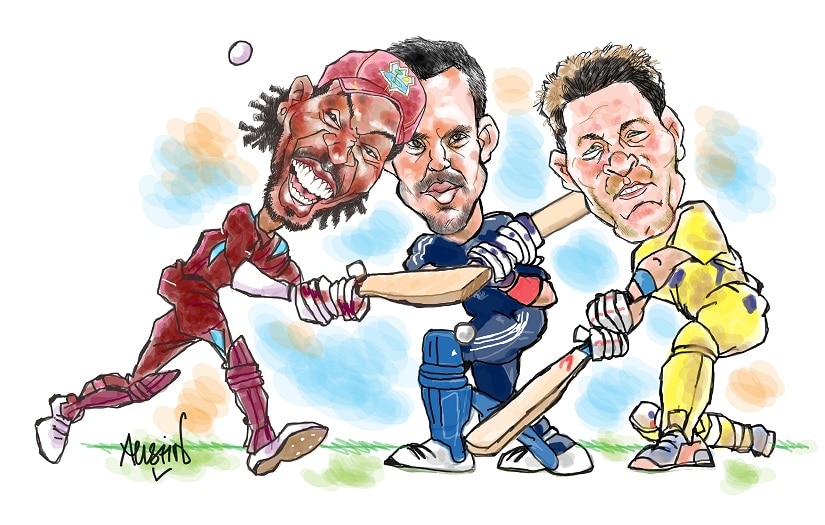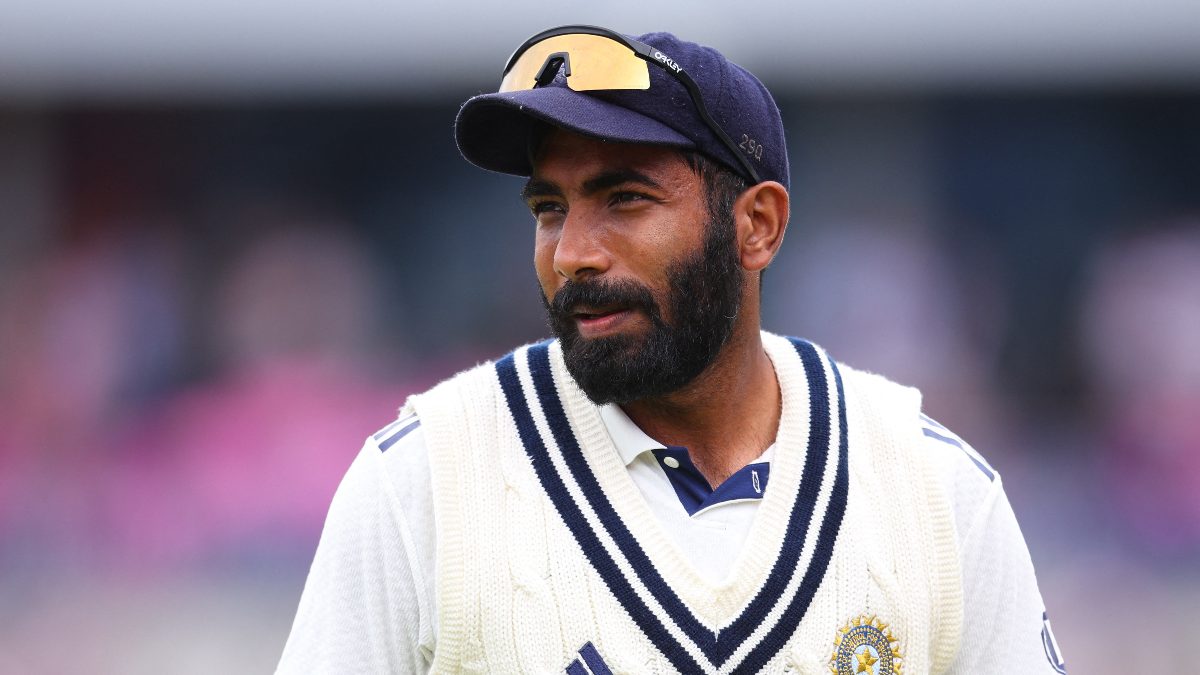“Stop calling it cricket. Cricket is the last thing that T20 is,” writes John Nicholson in his column for Cricket 365. “It should be called ‘Whack-A-Ball’ or ‘Slugfest’.” England coach Trevor Bayliss believes that T20 matches should only be played among franchises, not nations. He confessed at a press conference, after the recent Ashes series, that with so many Tests, ODIs and T20s being played at the international level, there would soon be a certain amount of blowout for players, as well as for coaches. Virat Kohli, India’s super fit skipper too, has gone on the record to say that he has now started feeling the stress of playing the game, day in, day out. The 20-over game is then looked upon as an evil by most of the cricketing cognoscenti, but it seems to be a necessary evil, for it rakes in the moolah. It is bread and butter for players, officials and the boards. Moreover, it is very popular among the younger followers of the game. For a generation that has a short attention span, T20 provides instant gratification. [caption id=“attachment_4394455” align=“alignnone” width=“825”]  Will T20 really lead to Test cricket’s extinction in the long run? Illustration courtesy Austin Coutinho[/caption] The newest version of the game may have brought in new followers, filled up stadium seats and attracted huge amounts of money in the form of sponsorships and broadcast rights. But will this, as England skipper Eoin Morgan has predicted, really lead to Test cricket’s extinction in the long run? Supporters of T20 say that it is just the makeover that the traditional game of cricket needed. Test cricket, they opine, was on its last legs and that T20 had to be brought in as its life-support system. A slam-bang ventilator! T20 was born in England 15 years ago. The primary reason for its introduction was the dwindling attendance at County matches. The 120-ball, three-hour match was therefore planned as an alternative to a 90-minute football game; an evening out with the family. A decade and a half later, cricket pundits are worried that the youngest version of the game may devour its 150-year-old elder cousin. What started off as a ‘circus’ to attract crowds to Tests and 50-over games is now more popular, and more lucrative, than the older versions. Diehard fans in India, at the time when T20 took birth, weren’t very keen on embracing cricket’s brand new and brash avatar. India had some legendary talent then, and therefore people weren’t enthusiastic about these ‘six-hit’ contests. In 2007, India participated in the ICC T20 World Cup with a fair bit of reluctance. Surprisingly, MS Dhoni’s boys won the event and that changed T20’s fortunes forever. The Indian Premier League (IPL) began in 2008 followed by the KFC Twenty20 Big Bash in 2009, Down Under. Though these events were preceded by leagues in England, Pakistan and the Caribbean Islands, IPL and Big Bash brought in the big bucks into cricket. Cricket pundits believe that T20 leagues like IPL and Big Bash have made mercenaries out of some of the best cricketers in the world. One writer goes to the extent of calling them ‘Globe-trotting slog-merchants, jet-setting from payday to payday’. Chris Gayle and so many other great batsmen, who have retired from Test cricket prematurely to take part in IPL or Big Bash, are a case in point. Ben Stokes, for instance, was paid the equivalent of Rs 6.3 crore as annual contract amount (besides match fees) to play for England last season. Compare this with the Rs 14.5 crore he received to play for Rising Pune Supergiant in the IPL for only a month and a half. Some players in the IPL, Big Bash and some of the other franchisee leagues have become millionaires overnight, and have attained instant celebrity status. Besides providing the franchises and sponsors the opportunity to build their brands, T20 has brought in a lot of innovation into a game that had grown staid and complacent over the years; fireworks, cheer-leaders, characters, merchandise, music, anthems, logos, promotions, and what have you. What’s more, the T20 game has now seen a sea-change in technique and strategy. Batsmen play switch hits, ramp shots, lap shots, reverse slogs, and range hits; terms that were unheard of in cricket a few years ago. Bowlers, who were always on the defensive in the limited overs game, now bowl back-of-the-hand deliveries, knuckle balls, toe-crushers, slow bouncers and possess a host of other variations to prevent batsmen from running riot. Another area where T20 has brought in enormous improvement is fielding. Slide-stops, relay throws, brilliant run-outs, diving catches and super boundary line catching are now the norm. Since most T20 cricketers also play in Tests and ODIs, the latter have begun getting more attractive, with better scoring rates, clever bowling and eye-catching fielding. Experts say that T20 may have attracted younger and larger crowds into the stadiums; it may have encouraged stroke-play and innovation, and even brought in large amounts of money into the game. From where, they ask, will youngsters acquire the nuances, the technique, the patience, the temperament and the determination required to play five-day Test matches? The very Test matches, for which T20 was brought in as a cure-all, are therefore in danger of dying an early death. Michael Holding, Rolls Royce among fast bowlers of yore, believes that T20 is a ‘circus’ and should be treated as one. Expressing his views on the slam-bang version of the game to reporters, he said, “T20 has spread from international to domestic levels. Youngsters now learn to play shots that they see on television and don’t bother to learn the basics.” He is, therefore, pessimistic about the survival of Test cricket in the long run. Many ex-Test cricketers believe that the way forward is to do away with one of the least popular formats of the game, that is, the 50-over matches. Test cricket has to survive, and with that, the most popular form of cricket right now, T20. Therefore, in the very near future, with both players and coaches asking for a de-cluttering of the cricket season, we may have international series consisting of only three Test matches, and a few T20s added in for the sake of entertainment - and the money. The ICC and the various cricket boards shall have to take some pragmatic decisions in the near future to save Test cricket. One of them, as suggested by former players will be to do away with ODIs, for that format has outlived its value. Another would be to have a world championship of Test matches. Shorter international series will give players the time to recoup, and more time for domestic matches and the annual T20 league. Nicholson writes, “T20 is naked pole-dancing, compared to Test cricket’s Foxtrot.” Odd couple may be, but let’s have a fusion dance. Play on! The author is a caricaturist and sportswriter. A former fast bowler and coach, he is now a sought-after mental toughness trainer.
Apart from new followers and huge amounts of money, T20 has brought in a lot of innovation into a game that had grown staid and complacent over the years | #FirstCulture
Austin Coutinho is a sportswriter and cartoonist based in Mumbai. Formerly a fast bowler who was a Ranji Trophy probable in the 1980s for the city, Coutinho retired as senior manager (CRM) from Rashtriya Chemicals & Fertilizers in December 2014. Coutinho was former president of the Mumbai District Football Association, a coaching committee member of the Mumbai Cricket Association, and a member of Maharashtra’s Sport Committee. A coach and mental trainer, he has mentored some top class cricketers and footballers. Coutinho has also authored 6 books on sport and has contributed articles, cartoons and quizzes to some of the best newspapers and sports portals in the country. see more


)

)
)
)
)
)
)
)
)



